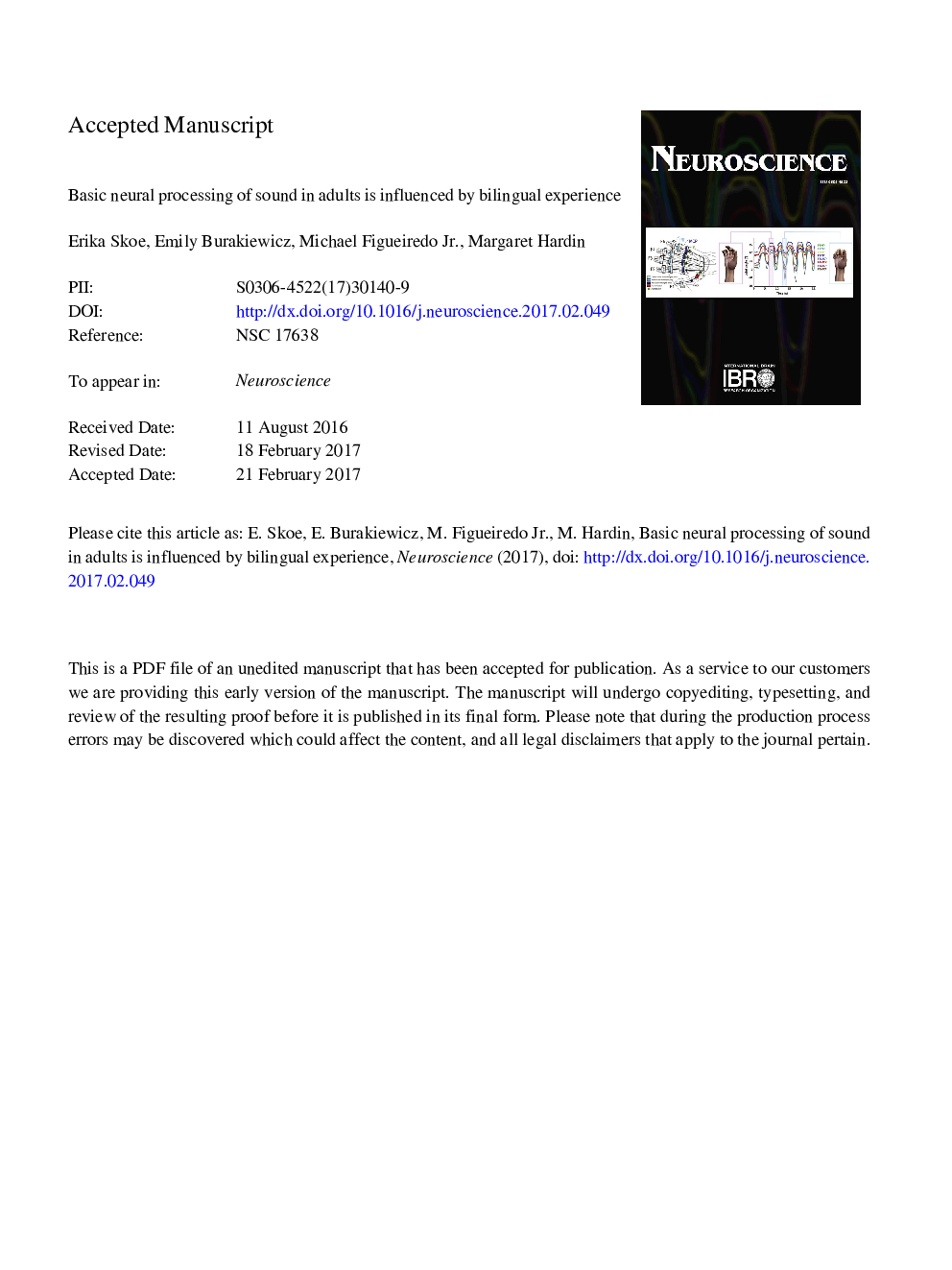| Article ID | Journal | Published Year | Pages | File Type |
|---|---|---|---|---|
| 5737710 | Neuroscience | 2017 | 39 Pages |
Abstract
The central auditory nervous system (CANS) undergoes language-dependent tuning to enhance linguistically relevant features of sound. However, less is known about how dual-language exposure affects the CANS. Recent reports indicate that Spanish-English bilingual children and adolescents have larger neural responses to the fundamental frequency (F0) of vowels, as measured by the frequency-following response (FFR), a phase-locked response to sound. Given the cross-language significance of F0, this led us to hypothesize that enhanced neural responses to the F0 are not unique to Spanish-English bilingual children and adolescents but are instead a common feature of a CANS with significant early dual language experience. In support of this hypothesis, we found that early bilingual adults, representing more than a dozen languages, had more robust FFRs to the F0 compared to English-language monolinguals suggesting that bilingual experience imprints on the CANS in a similar fashion regardless of the languages of exposure. Taken together, our results suggest that early exposure to two linguistic sound systems primes the brain to respond to the F0, a basic feature of all speech sounds that signals important indexical information for vowel, talker, and language identification.
Keywords
Related Topics
Life Sciences
Neuroscience
Neuroscience (General)
Authors
Erika Skoe, Emily Burakiewicz, Michael Figueiredo, Margaret Hardin,
